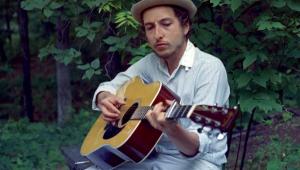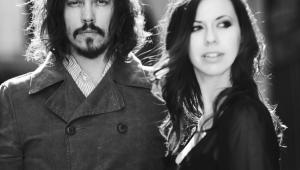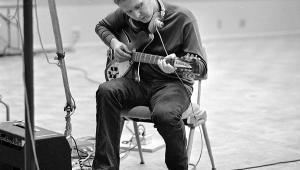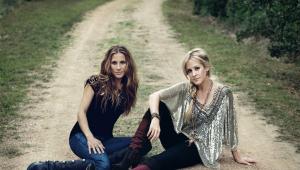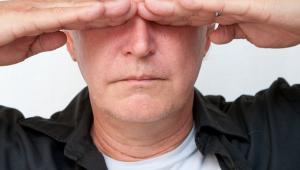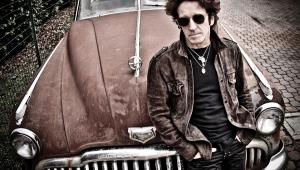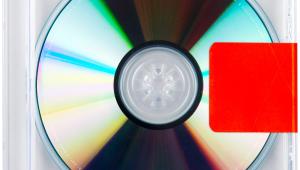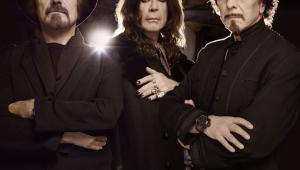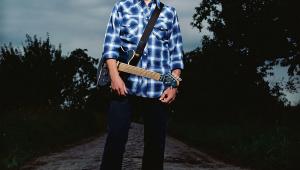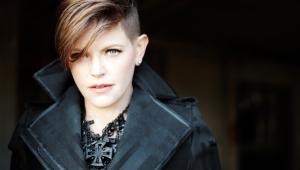Weekend Blu-ray Update: Alfred Hitchcock: The Masterpiece Collection
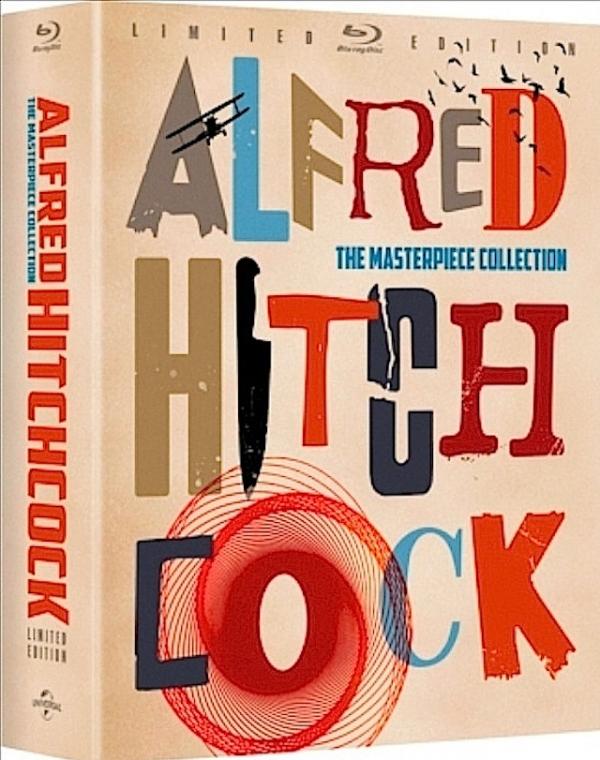
Alfred Hitchcock: The Masterpiece Collection
The 15 films from 1942-1976 gathered here - Saboteur (1942), Shadow of a Doubt (1943), Rope (1948), Rear Window (1954), The Trouble with Harry (1955), The Man Who Knew Too Much (1956), Vertigo (1958), North by Northwest (1959), Psycho (1960), The Birds (1963), Marnie (1964), Torn Curtain (1966), Topaz (1969), Frenzy (1972), and Family Plot (1976) - show the huge range of Alfred Hitchcock's macabre talents and interests, with the master taking on suspense, thriller, action, comedy, psychological drama, psychological investigation, sci-fi, and horror, all laced with dark humor and romance.
All the films have digitally restored pictures that have been scrubbed of all damage, debris, and flutter but they are still not completely free of problems. Although detail is generally good throughout, in the black-and-white films - Saboteur, Shadow of a Doubt, and Psycho - and many of the color ones, there is occasionally rather an excess of grain, and some images could have better contrast, figures more dimension, and soundtracks sometimes less hiss. Nevertheless they're Hitchcock films, in relatively good shape after up to 70 years, so they're still wonderful to look at and listen to.
With Shadow of a Doubt - the oldest title here - there's no hiss and little grain and its picture is very clear and clean. Faces, though, are a bit harsh-edged, detail having been overpumped without revealing much, and despite there being a nice a nice wide range of grays, there are no pure blacks or whites. Rope is grainy and has similar faults to Doubt, with facial detail lost and its Technicolors a bit drained - washed out, dark, dull, and not well defined.
Fortunately, a full film reconstruction and restoration of the horribly deteriorated, abused, and mis-stored negatives was embarked on by Robert A. Harris and James C. Katz for Vertigo in 1996 and Rear Window in 1997. Vertigo looks great. Colors are rich, the red flock wallpaper very intense in the scene where Scottie (James Stewart) first sees Madeleine (Kim Novak), the saturated greens of her dress picking her out in a crowd of grey, deep black, and blue business suits. The dimly-lit opening police chase is very clear so that you can see the whole drama being acted out, and there's volume to figures and space to rooms. Rear Window's restored picture is presumably from much more decimated source materials and is less pleasing. It's overgrainy with a lot of facial detail lost, and though phones are a deep black and whites fairly bright, colors can leak into one another or be a washed-out, indistinct yellowy-brown. Even though detail is good in bricks, close-ups of faces can have harsh edges, and though there's fair depth to all those voyeuristic compositions images are often flat.
In The Trouble with Harry colors are distinct and warmly autumnal. There's detail in herringbone jackets and background street signs and tree bark, and some volume to figures and fields in countryside compositions. The Man Who Knew Too Much also has good contrast, with deep blacks in suits and bright white hankies with a nice range of pastels, and distinct patterns.
North by Northwest's rich yellow taxis stand out against the sea of Madison Avenue grays and bright white blouses and villains have inky black outfits. There's some volume to figures (though not as much as in Vertigo), and though detail is lost in some soft shots, there's enough to read the newspaper story of the UN building murder over a character's shoulder. Psycho's contrast could be better - Janet Leigh's memorable bra is deep black but the white blouse she (sadly) puts on looks gray.
The Birds' generally subdued pastel tones are set off with bursts of saturated colors - as when a girl in a rich red dress strokes the inky black pups in the pet store - and it's generally all well defined so that striped ties and love-bird plumage are distinctly separated. Tippi Hedren's beautiful skin tones look natural, though she gets the Hollywood leading lady softening throughout, thus losing detail in her face and hair, and other figures are rather flat in the composed-in-depth but not very spacious feeling shots. In Marnie, her yellow clutch bag in the opening shot, deep black coats, bright white shirt, and the panic-invoking rich red gladiolas all reveal good contrast. Raindrops on a car are distinct and there's volume to figures and dimensionality to spaces such as the street Marnie grew up on, with the enormous ominous ship docked at the end. Grain, however, is more noticeable throughout than in the other films.
Torn Curtain has bright Technicolor images of the port, with a wide range of tones, especially noticeable in Julie Andrews skin. Blacks are deep but whites could be brighter and images a bit sharper. In Topaz's Red Square opening the richly colored flags make the square live up to its name, but being a downcast-type spy film, color is generally rather bland and dull despite the odd splash of intense color from posters and cars. Images are sharp and detailed, with lines in faces visible but figures are flat. In Frenzy's there are distinct patterns and texture in clothes, good inky black police uniforms, bright whites shirts, and a wide range of saturated colors in the Covent Garden fruit market.
Bernard Herrmann's music sounds thrilling in Vertigo; the DTS-HD Master Audio 5.1 soundtrack that was created for the restoration is subtly spread around you, bringing it more into the room. But for a lot of the film there's just dialogue from the centre channel - even when a character is off to either side- and there's very little atmospherics anywhere else. Voices actually sound better in the 2.0 Mono mix (despite slight hiss) coming from the left and right front channels, delivering a bigger, broader sound across the whole picture. The same is true for Psycho's DTS-HD Master Audio 5.1 mix vs. its 2.0 Mono track; the terrific Herrmann score is filled with tension-building repetitive themes and a scarily deep notes offset by disturbing - but never irritating - screaming strings. North by Northwest's Dolby TrueHD mix is more impressive still, with Hermann's opening music over Saul Bass's down-the-building credits pulled well off the screen into the surrounds. It's not as impressive as I recall it seeming on DVD, but that was back in the days when 5.1 mixes weren't quite so dramatically immersive. Nonetheless, it has a good dynamic range once again, playing deep bass off against high strings without any distortion. Marnie's score - the last Herrmann created for a Hitchcock film - is just as powerful a mix of highs and lows and is always clear in its slicing stridency.
The Birds' electronic score (by Oskar Sala and Remi Gassmann), though high-pitched to imitate the calls of the birds, also never breaks up and the many long silences are clear and effective. Torn Curtain's spy themes by John Addison sound fine but Topaz's music is a bit shrill in the top registers of Maurice Jarre's blasting military march in Red Square. Voices are crisp and clear in all soundtracks.
So, all in all, this is a mixed bag of Blu-rays in terms of technical quality and some of our Hitchcocks do need further rescuing using modern methods and technologies. But these are still treasures as movies and the set comes with a huge wealth of extras (listed below for Hitchcock, fans, scholars, and schizos), including commentaries, documentaries, and excerpts from Truffaut's interview with Hitchcock. The discs are housed photo album- style, accompanied by mini reproductions of each film's poster and a still, and the boxed set also includes a 50-page booklet featuring storyboards, costume sketches, correspondence, and rare photographs.
Saboteur, Shadow of a Doubt, and Rope, Video: 1.33:1, Rear Window, Video: 1.66:1. The Trouble with Harry, The Man Who Knew Too Much, Vertigo, Psycho, The Birds, Marnie, Torn Curtain, Topaz, Frenzy, Family Plot, Video: 1.85:1, North by Northwest, Video: 1.78:1. All, Audio: DTS-HD Master Audio 2.0Mono except Vertigo, Audio: DTS-HD Master Audio 5.1, DTS-HD Master Audio 2.0Mono, North by Northwest, Audio: Dolby TrueHD, Psycho, Audio: DTS-HD Master Audio 5.1, DTS-HD Master Audio 2.0Mono. Saboteur, Extras: "Saboteur: A Closer Look" behind-the-scenes featurette, storyboards for the Statue of Liberty setpiece, Hitchcock's sketches, production photographs. Shadow of a Doubt, Extras: "Beyond Doubt: The Making of Hitchcock's Favorite Film" behind-the-scenes featurette, production drawings by art director Robert Boyle, production photographs. Rope, Extras: "Rope Unleashed" behind-the-scenes featurette, production photographs. Rear Window, Extras: commentary by John Fawell author of Hitchcock's Rear Window: The Well-Made Film, 5 behind-the-scenes featurettes, Hitchcock–Truffaut interview excerpts, production photographs, re-release trailer narrated by James Stewart. The Trouble with Harry, Extras: "The Trouble with Harry Isn't Over" behind-the-scenes featurette, production photographs. The Man Who Knew Too Much, Extras: behind-the-scenes featurette, production photographs. Vertigo, Extras: commentary by filmmaker William Friedkin, commentary by associate producer Herbert Coleman, restoration team Robert A. Harris and James C. Katz, and other Vertigo participants, "Obsessed with Vertigo: New Life for Hitchcock's Masterpiece," "Partners in Crime: Hitchcock's Collaborators," and "100 Years of Universal: The Lew Wasserman Era" featurettes, archives, Hitchcock–Truffaut interview excerpts, foreign censorship ending, restoration theatrical trailer. North by Northwest, Extras: commentary by screenwriter Ernest Lehman, 4 behind-the-scenes featurettes, music-only audio track, stills gallery. Psycho, Extras: commentary with Hitchcock and the Making of Psycho author Stephen Rebello, 3 behind-the-scenes featurettes, "The Release of Psycho" vintage newsreel, breakdowns of the Shower Scene setpiece, archives, Hitchcock–Truffaut interview excerpts, posters and Psycho ads, lobby cards, behind-the-scenes photographs, production photographs. The Birds, Extras: "All About The Birds," "100 Years of Universal," "The Birds Is Coming," "The Birds: Hitchcock's Monster Movie," and "Suspense Story: National Press Club hears Hitchcock" featurettes, Vintage Universal International newsreels, Tippi Hedren's screen test, Hitchcock–Truffaut interview excerpts, deleted scene, original ending, storyboards, production photographs. Marnie, Extras: "The Trouble with Marnie" behind-the-scenes featurette, archives. Torn Curtain, Extras: "Torn Curtain Rising" behind-the-scenes featurette, selected scenes scored by Bernard Herrmann, production photographs. Topaz, Extras: alternate endings, "Topaz: An Appreciation" with film historian and critic Leonard Maltin, storyboards for The Mendozas setpiece, production photographs. Frenzy, Extras: "The Story of Frenzy" behind-the-scenes featurette, production photographs. Family Plot, Extras: "Plotting Family Plot" behind-the-scenes featurette, storyboards for the chase scene, production photographs, 50-page book featuring storyboards, costume sketches, correspondence, and rare photographs. Studio: Universal.
- Log in or register to post comments

